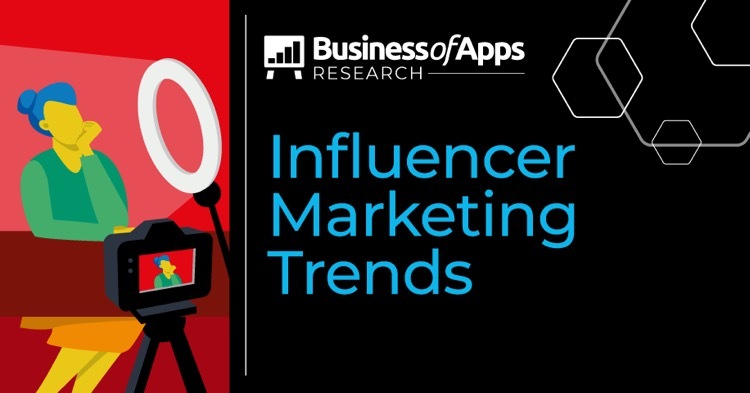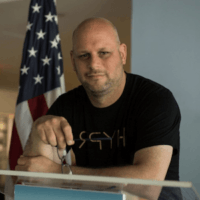Several years ago Influencer marketing emerged as one of the major breakthroughs in digital marketing. Its biggest strength was that it helped brands to solve the toughest marketing challenge they faced – how to win people’s trust. Influencers build strong, long-term relationships with a wide audience of people who trust their opinion on many topics. When brands lunch ad campaigns with Influencers, they can leverage that trust and build an emotional connection between their products/services and their potential customers.
Over the years, several types of Influencers emerged. Essentially, they can be divided according to their specialization in specific industries and the size of their fellowship. They cover a broad spectrum of industries, such as Beauty, Clothing & Apparel, Cosmetics, Lifestyle, Nutrition, Traveling, Organic, and much more.
Featured Influencer Marketing Companies
As to the size of the Influencers’ audience and how it categorizes them, they are divided into 4 categories – Nano, Micro, Macro, and Mega Influencers.
Nano Influencers are social media users with the number of influencers anywhere between 100 and 1,000 followers. These people don’t associate themselves with the Influencer marketing industry at all, you won’t find them in the Influencer marketing platforms catalog and, working with brands, they get a product they promote instead of a financial reward as traditional Influencers would do.
Discover the Magic: Unleash Growth with Influencers
We uncover your app’s potential, converting downloads into devoted, engaged users. Let Moburst reveal the secrets behind the trick.
Book your free consultationMicro-Influencers go one step above Nano ones, having between 1,000 and 10,000 followers. They have a certain expertise in a specific area, like – food, traveling, fashion or fitness. A high level of engagement is another feature that sets them apart from Nano Influencers who don’t measure level of engagement with their followers.
Next up are Macro Influencers who have the number of followers ranging from 100,000 to 1,000,000.
And finally Mega Influencers are on the top of this hierarchy with more than 1,000,000 followers on social media. In contrast with Macro Influencers, who gained their fame online, Mega Influencers are typically sport, movie, music celebrities that came on social media being famous already and quickly gained a big number of followers.
To make the case for why Influencers are efficient as marketers, we need to take a broad look at the economy. As the world economy, and its most dynamic digital component, continues to grow, it becomes progressively more and more difficult for brands to compete. On top of that, by now people are grown wary of – and quite often sick of – brands regular digital ads and don’t engage with them as brands would want them to.
In the world where COVID-19 pandemic continues to impact all parts of the economy, Influencers become even more important digital marketing driving force but the equation of their relationships with brands is changing. Earlier this year we reached out top Influencer marketing agencies to get their quotes on what Influencer marketing trends will dominate in 2021.
In these quotes there are several common trends that were mentioned frequently:
- A shift towards working with micro Influencers as a more reliable way to run an ad campaign, when the risk of a failure is low because it’s distributed between multiple influencers.
- Influencers will facilitate the transition of social media from, for the most part, entertainment to e-commerce platforms.
- Short video format will continue to dominate Influencer marketing campaigns influenced by TikTok and imitations like Instagram Reels and others.
If you want to contribute your view on mobile and in app advertising trends fill in the form here.
Influencer Marketing Thought Leaders
“While I believe there are going to be multiple trends as 2021 unfolds, the primary one we’re tracking is the recognition by larger companies that micro influencers have an efficacy in aggregate that is superior to the gamble associated with relying on a single celebrity influencer.
It’s all about risk mitigation; each post has a probability of extremes in both success and failure, with most reverting to the mean. By spreading that risk around to thousands of micro influencers, the risks are flattened out, allowing larger brands to more predictably rely on the channel. As an analogy it is similar to VCs spreading their seed and series A bets around, knowing full well they only need a couple winners to get an incredible ROI.”
” Social Commerce: social media will better integrate live streaming and video-on-demand with products showcase, 1-click purchases and a stable integrated mobile payment system. Right now, social commerce in the US are seeing low funnel conversions and a high cart abandonment because of its complicated flow.
Influencer marketing will work to make it user-friendly and easy-to-buy in order to open up a new revenue stream based on affiliation fees and to transform social media from mere entertaining platforms to actual e-commerces where entertaining user-generated videos will smoothly bring the followers to buy certain products.“
“Once upon a time, the founder of H&M, Erling Persson, talked about that their stores should be located where the shopping bags are strolling. In other words, the streets where their audience is walking. Today, the locations where the shopping bags are strolling are on Social Media, e.g. Instagram, YouTube, TikTok, Pinterest, etc.
In 2021, it’s more important than ever for us as consumer brands to adapt this and put a significant majority of our focus to make sure that we are visible here. Our main storefronts should be here, it’s here we are building our brand and awareness, and it’s here where our customers open their eyes to us.
On top of that, those spaces have become way more crowded during the last year, and research from e.g. Edelman shows that 62% of consumers are more likely to trust messages from people rather than brands. Our main question for 2021 should be – how do we make sure that we present our brand in a trustworthy way in the locations where the shopping bags are strolling in 2021.”
“Micro-Influencers will play the leading role, again, in 2021. They have a trustable audience and a real high engagement. They have to perform with stories, swipe-up to the online shopping link, reels, and IGTV. Videos are the best way to create engagement and drive awareness to the right audience. Now Social media are full of influencers. Be ready, Influencer Marketing on Pinterest is coming, and it will be stronger than the other platforms.“
” Influencer marketing will continue to grow and catch up to other marketing industries through the introduction of technologies to:
1. Better identify and evaluate influencers and exclude fraud;
2. Activate larger amounts of influencers at scale;
3. Measure performance and returns.
We are seeing a broadening of the market from Instagram’s dominance where platforms like Tik Tok, Snap and Pinterest are carving out their own influencer marketing channels.
Finally, we see a shift to community building and a return to group leaders such as people who have a big following on platforms like Telegram or lead big Facebook groups. In other cases, the communities are owned by the brand themselves.”
” Some of the main trends of 2021 will surround authenticity and relatability, especially during a time when so many are affected by Covid-19. People are searching for inspiration, positivity and an honest connection. We are seeing a wave of opportunity for agencies, as businesses accept Covid-19 as the new norm and aim their digital strategies around it. Brands are going to use influencer marketing to connect in a genuine, authentic way while also incorporating a sentiment of togetherness and giving back.
The “power duo” (FB + IG) will continue to replicate features and functionality, with the goal of becoming “everything” for everybody – while at the same time shifting algorithms to ensure dependency on paid efforts.
We will also see users gravitate more and more to quick editing style video content that is attention grabbing and entertaining while informative. This became a huge trend in 2020 for influencer content, as so many people were staying in and tapping into TikTok, as well as IG Reels. This is just getting started and will continue to grow in 2021.”
“One of the main trends in 2021 in Influencers marketing will improved monetization with short form content. This will allow advertisers to see better ROAS when working with creators on platforms like TikTok.“
“1. Video will be more essential than ever.
We saw video content take off in 2020, from lives to short-form videos to shoppable video streams. Influencers are churning out great, engaging, fun video content, and brands are going to have to get on board and invest more heavily in video if they want to retain engagement among audiences in the year ahead.
2. Brands will hire influencers to create content – perhaps more than agencies.
When the pandemic sent everyone into lockdown, many brands were left struggling to get enough of the visual assets they needed from their traditional creative agency partners. Enter the influencer, who was able to fill the gap with professional, engaging, and beautiful content that can be used across a marketing mix at a fraction of the price. We’ve seen a marked uptick in brands hiring influencers to create content, and we expect this to grow in 2021.
3. TikTok will continue to become more brand-friendly.
With TikTok’s ban woes under Trump seemingly in the rearview mirror, we expect the platform to continue to roll out new and better self-service options for advertisers and marketers. On the influencer marketing front, we’re looking forward to seeing more tools that make it easier for brands to use organic content in paid campaigns, track performance, and include shoppable links.
4. Music copyright infringement will become an industry-wide concern.
It might not be common knowledge, but influencers and brands cannot use copyright music in sponsored content without paying a licensing fee, even if that hit track is readily available for use on a platform and is going viral with creators. Record labels are becoming more aggressive about going after brands that illegally use their music, and we anticipate this will become a more central issue in the influencer industry in the year ahead.
5. Brands will figure out how to incorporate Reels into their marketing plans.
Instagram launched TikTok competitor feature Reels in August 2020, and few brands have yet to figure out how to make the most of it in their campaigns. With Instagram updating their product to prioritize Reels, however, we can count on the most innovative agency strategists and brands to figure out how to maximize the feature in their influencer campaigns.
6. Shared values will drive brand-influencer partnerships.
Creators are moving away from the idea that their Instagram feeds are just mini Vogue magazines and moving toward partnerships with brands that share their values. The gravity of current affairs in the last year has reshaped influencers’ ideas of what it means to have influence – what you talk about, the issues you care about, and the brands you partner with. Expect shared values to play a much larger role in brand and influencer partnerships going forward. “











